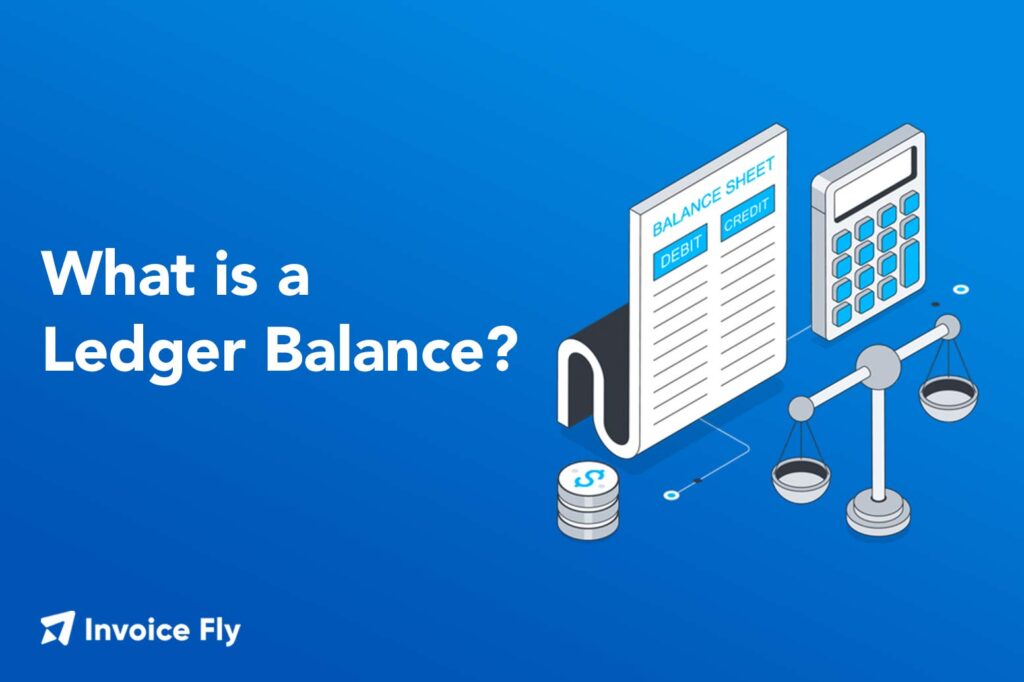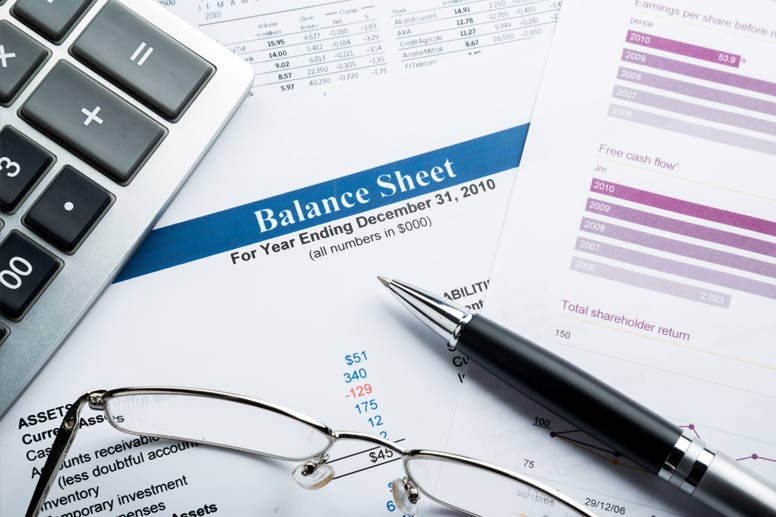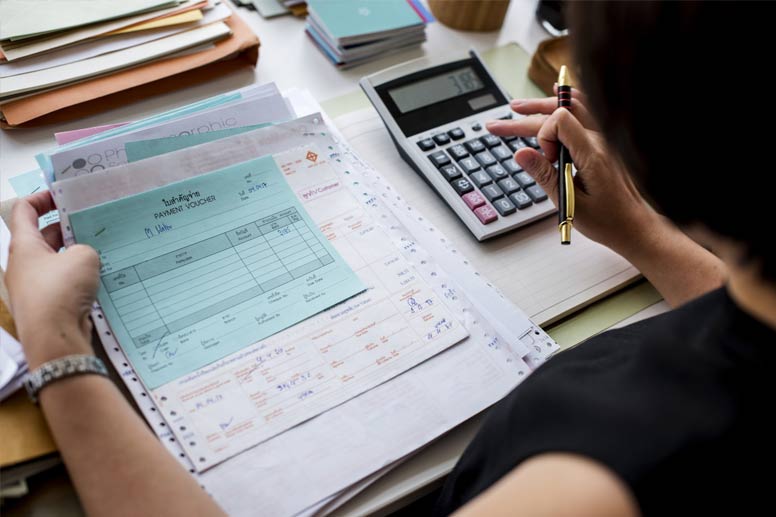What’s a Ledger Balance? Definition, Formula & Examples

Table of Contents
- What Does Ledger Balance Mean?
- Why is it Important?
- How to Calculate It?
- Ledger Balance vs. Available Balance
- Which Is More Reliable?
- How Do Ledger Balances Work?
- Factors That Affect Ledger Balances
- Practical Scenarios for Understanding Ledger Balances
- How to Use a Ledger Balance for Financial Management
- The Role of Ledger Balances in Business
- Why Choose Invoice Fly for Managing Your Finances?
- Get Started
If you’ve ever reviewed your bank account details and come across the term “ledger balance,” you may have wondered, “What does ledger balance mean, and how is it different from my available balance?”.
Understanding the concept of a ledger balance (LB) is crucial for managing your finances effectively, especially to avoid overdraft fees or financial mismanagement.
What Does Ledger Balance Mean?
A “ledger balance” – also called “current balance” – is the amount of money in your bank account at the end of a business day. It reflects all credits (deposits) and debits (withdrawals) that have been posted to your account up to that point.
However, it doesn’t include pending transactions, such as checks that haven’t cleared or debit card purchases that are yet to be processed.
In essence, your ledger balance represents the “frozen snapshot” of your account’s activity at a specific time—usually at the close of a banking day.
Why is it Important?
Knowing your ledger balance is essential for several reasons:
- Accurate Financial Planning: It gives a clear picture of your starting financial position for the next day.
- Avoiding Overdrafts: By understanding the funds already cleared, you’re less likely to spend money that isn’t truly available.
- Bank Reconciliation: Businesses often rely on ledger balances to reconcile their accounts accurately.
Explore tools like our Invoice Maker to save time by sending fast and good-looking professional invoices.

How to Calculate It?
Calculating your LB is straightforward. Here’s a simple formula:
LB = Previous Day’s LB + Cleared Credits – Cleared Debits
For example:
- Previous day’s LB: $1,000
- Cleared credits (deposits): $500
- Cleared debits (withdrawals): $200
LB = $1,000 + $500 – $200 = $1,300
Remember, any pending transactions won’t affect your ledger balance until they’ve been fully processed.
For accurate tracking, consider using our Reporting feature to monitor your financial records efficiently.
Ledger Balance vs. Available Balance
One of the most common questions is, “What is the difference between ledger balance and available balance?” Let’s break it down:
- Ledger Balance: Reflects the total amount in your account at the end of the previous business day. It excludes pending transactions.
- Available Balance: Indicates the amount you can spend or withdraw. It factors in pending transactions and holds placed by your bank (e.g., for checks or large purchases).

Which Is More Reliable?
Both balances serve unique purposes. The ledger balance is reliable for tracking past transactions, while the available balance is more practical for immediate financial decisions. For example:
- Use the ledger balance for reconciling your finances.
- Check the available balance to avoid overdrawing your account.
Streamline your cash flow management with our Client Portal tool, a great tool for tracking payments and managing client transactions.
How Do Ledger Balances Work?
- Daily Updates: The ledger balance is updated once per business day, typically after the bank’s processing cutoff time.
- Transaction Posting: Only transactions that have cleared (e.g., deposits processed or checks cashed) are included.
- Bank Statements: Your monthly bank statement will show the daily ledger balance for each business day of the statement period.
Use our Export Invoice feature to create clear, detailed records of your financial transactions for reconciliation.
Factors That Affect Ledger Balances
- Cleared Transactions: Deposits and withdrawals that have been fully processed by your bank.
- Banking Cutoff Times: Transactions made after a certain time may not post until the next business day.
- Holds on Funds: Banks may place temporary holds on deposits, such as checks, which delay their addition to your LB.
Practical Scenarios for Understanding Ledger Balances
- Payroll Deposits: If your paycheck is deposited on Friday but your bank has a weekend processing delay, the funds may not reflect in your ledger balance until Monday.
- Large Purchases: Let’s say you make a significant purchase with your debit card. The available balance will decrease immediately because of the hold, but your ledger balance won’t update until the transaction clears.
To handle payroll deposits and large transactions seamlessly, explore our Online Payments tool to keep track of all incoming and outgoing payments.
How to Use a Ledger Balance for Financial Management
Here are some actionable tips:
- Monitor Daily Balances: Regularly check your LB to keep track of cleared transactions.
- Plan Spending: Use the available balance for immediate purchases, but reference your LB for budgeting.
- Avoid Fees: Ensure your account has enough funds to cover any scheduled transactions.
Optimize your financial planning with our Time Tracking feature, which ensures accurate tracking of billable hours and project costs.

The Role of Ledger Balances in Business
For businesses, they are invaluable for:
- Cash Flow Management: They provide a snapshot of cleared funds, helping businesses plan payroll, vendor payments, and more.
- Auditing and Reconciliation: Accountants often rely on LBs to ensure accuracy in financial reporting.
- Decision-Making: Businesses can make informed decisions about expenses and investments based on cleared funds.
Enhance your business’s cash flow management with our Estimate Generator, which simplifies budgeting and quoting processes.
Why Choose Invoice Fly for Managing Your Finances?
Understanding and managing your LB is just one piece of the financial puzzle.
Tools like our Invoice Maker can simplify financial management for both individuals and businesses.
- Generate Professional Invoices: Save time and present a polished image to clients.
- Track Payments: Stay on top of incoming payments and avoid missed transactions.
- Streamline Cash Flow: Use features like reporting software and client portals to monitor your financial health.
Discover Invoice Fly’s comprehensive suite of tools, including the Receipt Scanner for seamless expense tracking and the Speech to Invoice feature to speed up invoicing processes.
Get Started
The ledger balance is more than just a figure on your bank statement — it’s a vital tool for understanding your financial position and managing your money effectively.
Whether you’re an individual tracking personal finances or a business owner managing cash flow, knowing how to interpret and use your ledger balance is essential.
Get started by streamlining your financial processes and achieving peace of mind in your financial management journey.
Download Invoice Fly today!

